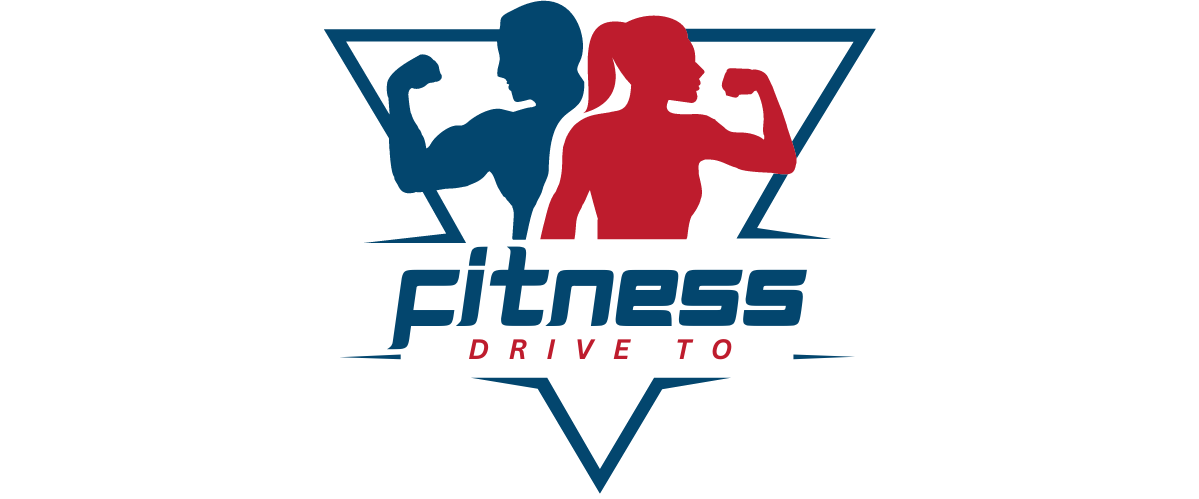There’s a wealth of information out there about fitness, but knowing the key elements that make up an effective physical fitness program is vital for your success. By integrating these ten vital components into your routine, you not only enhance your overall performance but also reduce the risk of injury and ensure long-term sustainability in your fitness journey. Whether you are just starting out or looking to refine your regimen, this list will guide you in crafting a balanced and efficient program tailored to your unique needs.
Key Takeaways:
- Goal Setting: Establish clear and attainable goals to guide your fitness journey and track progress.
- Diverse Exercise Types: Incorporate various activities such as strength training, aerobic exercises, and flexibility routines for overall fitness.
- Consistency: Regular and consistent workouts are vital for developing a routine and achieving long-term results.
- Progressive Overload: Gradually increase the intensity of workouts to challenge your body and encourage continual improvement.
- Rest and Recovery: Allow adequate time for recovery to prevent injury and sustain motivation throughout your fitness program.

Goal Setting
While begining on your fitness journey, establishing clear goals is vital to creating an effective physical fitness program. By pinpointing where you want to go, you can design a roadmap that motivates you and keeps you focused. Whether your aim is to lose weight, build endurance, or enhance strength, setting specific, time-bound goals helps shape your overall strategy and fosters a positive mindset.
Specific Objectives
Clearly defining your fitness objectives allows you to tailor your program to suit your needs. Specific goals, such as “I want to run a 5K in under 30 minutes” or “I aim to increase my bench press by 20 pounds within three months,” provide direction and clarity, making it easier to track your progress and stay committed to your fitness journey.
Measurable Outcomes
Assuming you set achievable targets, having measurable outcomes is important in evaluating your success. Measurable outcomes allow you to track your progress objectively, ensuring that your hard work translates into visible results. This aspect of goal setting is not just about aesthetic changes; it also includes performance metrics, such as increasing the number of push-ups or improving your flexibility. By regularly assessing these outcomes, you can celebrate your achievements and adjust your program to maintain continuous improvement.
This focus on measurable outcomes is vital for sustaining motivation and accountability. By quantifying your progress, you can effectively gauge improvements in strength, endurance, and overall health. To maintain engagement, keep a record of your metrics and review them regularly, allowing you to make necessary adjustments to your program. Celebrating even small achievements can greatly enhance your motivation and commitment to your fitness goals.
Assessment
Some key aspects of an effective physical fitness program include regular 10 Essential Components of Strength Training, which emphasize the importance of assessment. Proper assessment helps you identify your current fitness level, allowing you to create a tailored program that meets your specific needs and goals.
Initial Fitness Evaluation
To ensure you initiate on a fitness journey that suits your needs, conduct an initial fitness evaluation. This assessment should include measuring your strength, flexibility, endurance, and body composition to provide a comprehensive overview of your current abilities and areas for improvement.
Regular Progress Tracking
If you want to see continuous improvement in your fitness journey, regular progress tracking is necessary. By measuring your progress at consistent intervals, you’ll be able to adjust your program accordingly and keep yourself motivated.
Tracking your progress not only helps you stay motivated but also allows you to pinpoint significant strides in your fitness. Documenting your achievements can reveal patterns and trends in your performance, while also highlighting areas where you may need to focus more effort. Neglecting to monitor your progress can lead to plateaus or even regressions in your results, which can be detrimental to your overall fitness goals. Keep detailed records of your workouts, and make adjustments as necessary to ensure continual enhancement.
Variety
Many people fall into a workout rut, repeating the same exercises day after day. Introducing variety into your fitness program keeps it engaging and promotes overall physical improvement. By incorporating different workouts, you not only challenge your body in new ways but also reduce the risk of overuse injuries. Embracing variety enables you to discover new favorite activities and maintain your motivation to stay fit.
Diverse exercises
Some great ways to ensure diversity in your workouts include incorporating strength training, cardio, flexibility exercises, and recreational sports. Exploring different modalities can help you develop a more balanced fitness routine that promotes strength, endurance, and agility. You may find that activities like swimming or cycling complement your usual regimen, making workouts more enjoyable and effective.
Change routines
While maintaining a routine can be beneficial, it’s important to periodically change your workout regimen to ensure continued progress and avoid monotony. Different types of exercises, duration, and intensity levels can all be adjusted to keep your workouts fresh and stimulating.
Diverse workout routines not only prevent boredom but also help you overcome plateaus. If you find yourself not making progress, consider altering your exercises, number of sets, or weights. The key is to challenge your body in new ways, which can lead to increased strength and improved fitness levels. This reduces the risk of injury by avoiding repetitive strain on your muscles and joints. Keep your body guessing, and you’ll likely see more positive results in your physical fitness journey.

Nutrition
Your nutrition plays a vital role in achieving your physical fitness goals. A well-rounded diet provides your body with the necessary fuel to perform optimally, aids recovery, and helps you maintain energy levels throughout the day. Focusing on nutrient-dense foods ensures you’re getting the vitamins and minerals needed to support your fitness routine and overall health.
Balanced Diet
Assuming you want to maximize your fitness results, a balanced diet is important. This means incorporating a variety of macronutrients, including carbohydrates, proteins, and fats, along with plenty of fruits and vegetables. Each component serves a specific purpose in your body, promoting muscle growth, energy replenishment, and overall wellness.
Proper Hydration
The importance of hydration cannot be overstated. Staying properly hydrated supports your body’s physiological functions and significantly enhances your workout performance. It helps regulate body temperature, lubricates joints, and assists in nutrient transportation and digestion. Inadequate hydration can lead to fatigue, decreased strength, and impaired recovery, which can thwart your fitness progress.
To ensure optimal hydration, aim to drink water consistently throughout the day, not just during workouts. Dehydration can cause performance decline, cramps, and heat exhaustion, while adequate fluid intake enhances muscle function and overall stamina. Tailor your hydration needs to factors like exercise intensity, climate, and your individual sweat rate. By prioritizing hydration, you support your body’s ability to perform and recover effectively.
Recovery
Unlike many people believe, recovery is not simply an afterthought in a fitness program; it’s a vital component that enhances your performance and reduces the risk of injury. Prioritizing recovery allows your body to heal and adapt to the stresses of training, ultimately leading to better results and improved overall wellness.
Rest Days
You’ll benefit immensely from incorporating rest days into your fitness routine. These days give your muscles time to repair and grow, reducing fatigue and restoring your energy levels so that you can stay consistent and motivated.
Quality Sleep
You can’t underestimate the significance of quality sleep in your fitness journey. It plays a vital role in muscle recovery, hormone balance, and overall well-being.
The deep sleep stages facilitate muscle repair and growth while regulating hormones such as cortisol, which affects hydration and recovery. Lack of proper sleep can lead to increased fatigue, decreased performance, and heightened risk of injury. Aiming for 7-9 hours of quality sleep per night optimizes your body’s recovery processes and enhances your fitness results, ensuring you wake up feeling refreshed and ready to tackle new challenges.
Adaptability
All effective physical fitness programs must include the element of adaptability. This means they should be flexible enough to adjust to your changing circumstances, preferences, and goals. You may find that what works for you today may not suit you next month or next year. By incorporating adaptable practices, you ensure that your fitness journey remains engaging, sustainable, and aligned with your evolving needs.
Modifications for needs
The ability to modify exercises and routines is necessary for anyone engaging in fitness. This will allow you to cater your program to fit your unique requirements, whether you’re a beginner or training for a specific event. By tailoring your activities, you can progress safely while maximizing effectiveness, ensuring that your program still challenges and motivates you properly.
Accommodate injuries
Little adjustments are often necessary to accommodate injuries within your fitness program. Your body is vulnerable and requires care, especially when an injury occurs. Leading with this cautious approach allows you to mitigate risks and maintain a positive trajectory in your fitness journey.
Any fitness program that ignores the possibility of injuries can lead to significant setbacks or long-term health issues. It’s necessary that you understand your injuries and avoid exercises that may exacerbate them. Incorporating low-impact alternatives and focusing on rehabilitation exercises can help you preserve your fitness level while allowing your body to heal. Consult with a healthcare professional for personalized guidance, ensuring you don’t inadvertently worsen your condition. Ultimately, emphasizing injury accommodation can contribute to a safer, healthier approach to your fitness program.
Scheduling
For any effective physical fitness program, establishing a regular schedule is paramount. By setting a consistent workout routine, you can ensure that exercise becomes a non-negotiable part of your lifestyle. Treat your workout times like important appointments; this reinforces your commitment and helps you create a sustainable habit, leading to better results over time.
Consistent Workout Times
On average, sticking to consistent workout times helps establish a rhythm in your fitness journey. When you select specific days and times to exercise, you signal to your body that it’s time to perform, making it easier to get into the right mindset and maintain motivation.
Balanced Frequency
With a balanced frequency, you can optimize your fitness progress and avoid burnout. Incorporating a mix of high-intensity workouts along with recovery days creates a well-rounded program tailored to your needs. Striking this balance is imperative for achieving strength, endurance, and overall well-being.
Balanced frequency allows you to maximize your results while minimizing the risk of injury. Incorporating workouts 3-5 times a week strikes a suitable balance for most individuals, giving you enough stimulus for muscle growth without overwhelming your body. Neglecting rest days may lead to fatigue and diminish your performance, while too much recovery can stall your progress. Regularly assessing your weekly schedule to ensure that a suitable mix of cardio, strength training, and flexibility work keeps your fitness on track and supports your overall health.
Motivation
Once again, motivation plays a vital role in maintaining an effective physical fitness program. It fuels your determination to stay on track, overcome obstacles, and reach your fitness goals. By cultivating a strong desire to succeed, you can create a mindset that helps you push through challenges and setbacks, ultimately leading to a more rewarding experience.
Find personal inspiration
Even the most disciplined individuals sometimes struggle to stay motivated. To combat this, seek out personal inspiration in everyday life, whether it be through stories of others who have overcome adversity, fitness influencers, or even a close friend who shares your goals. Surrounding yourself with positive energy will reinforce your drive to push forward and achieve your objectives.
Use rewards
Rewards can be effective tools to reinforce your motivation and celebrate progress along your fitness journey.
Plus, using rewards gives you something to look forward to after achieving specific goals. Whether it’s treating yourself to a spa day, a new workout outfit, or a weekend getaway, finding ways to celebrate your achievements helps reinforce positive behaviors. Just ensure that your rewards align with your fitness goals, as unrealistic or unhealthy rewards may hinder your progress. Focus on rewarding yourself in ways that promote overall wellness and enhance your commitment to your fitness program.

Support
Keep in mind that having a strong support system can significantly enhance your fitness journey. Whether through friends, family, or fitness professionals, support can provide motivation, accountability, and encouragement, making it easier for you to reach your goals. Surrounding yourself with positive influences is vital to maintaining both consistency and enthusiasm in your program.
Partner Workouts
One effective way to stay motivated is by opting for partner workouts. Exercising with a partner helps you challenge each other, share your achievements, and maintain commitment. Additionally, having someone else there makes the workouts more enjoyable, turning fitness into a social activity rather than a chore.
Community Engagement
The power of community engagement cannot be underestimated in your fitness program. By participating in group classes, local events, or club activities, you immerse yourself in a supportive environment where you can meet like-minded individuals who share your goals.
Plus, joining a community not only enhances motivation but also offers accountability and encouragement from others who understand your challenges. You can develop lasting friendships while benefiting from shared experiences that foster growth. Participating in group exercises or local fitness events can even provide opportunities to learn new skills and embrace healthy competition. Being part of a community can transform your approach to fitness, making it a positive and empowering experience.
Conclusion
Considering all points, an effective physical fitness program encompasses ten necessary components that cater to your individual needs and goals. By incorporating aspects such as goal setting, consistency, and variety, you can create a sustainable routine. It is vital to prioritize nutrition, rest, and recovery alongside your workouts. By understanding and implementing these elements, you empower yourself to achieve optimal physical fitness, enhance your overall well-being, and maintain a healthy lifestyle.
FAQ
Q: What are the key components of an effective physical fitness program?
A: An effective physical fitness program typically includes the following crucial components: cardiovascular endurance, muscular strength, muscular endurance, flexibility, body composition, specificity, progression, recovery, balance, and motivation. Each component plays a vital role in promoting overall physical health and efficiency in achieving fitness goals.
Q: How does cardiovascular endurance fit into a fitness program?
A: Cardiovascular endurance refers to the ability of the heart and lungs to supply oxygen during sustained physical activity. Activities such as running, cycling, and swimming enhance this component. Incorporating cardiovascular exercises into a fitness program improves heart health, increases stamina, and supports weight management.
Q: Why is strength training important in a fitness program?
A: Strength training is important as it helps to build and maintain muscular strength and mass. This component not only assists in daily activities but also enhances metabolism, bone density, and overall functional fitness. Incorporating exercises like weight lifting or resistance training at least two times a week is recommended for optimal benefits.
Q: How can flexibility be incorporated into a fitness program?
A: Flexibility can be incorporated through targeted stretching exercises, yoga, or mobility drills. These activities improve range of motion, reduce the risk of injury, and enhance performance in other exercises. It’s suggested to include flexibility exercises at least two to three times a week, ideally after workouts or as part of a warm-up routine.
Q: What role does motivation play in maintaining a fitness program?
A: Motivation is vital for sustaining a fitness program. It helps individuals stay committed to their exercise routines and goals. Setting specific, achievable goals, tracking progress, finding a workout partner, and varying workouts can enhance motivation. Establishing a positive mindset and celebrating small achievements also contribute to long-term adherence to a fitness plan.



